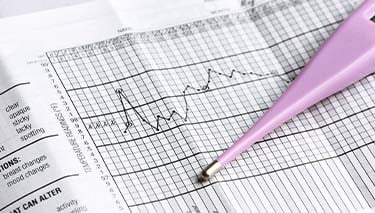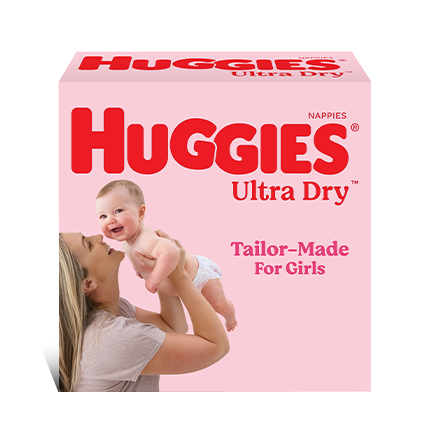Step 1 of trying to conceive is to learn about your body’s menstrual cycles and then this insight into maximising your chances of conceiving. Just before and after ovulation is the right time to try for a baby, and there is only a small window of time each month where the egg is viable and capable of fertilisation.
What is ovulation?
Ovulation is the release of an egg from the ovaries, after follicle stimulating hormone (FSH) has supported the growth of ovarian follicles. Generally one egg is released each month, though this can vary depending on the individual length of a woman’s menstrual cycle. Some women release more than one egg each month, especially those with the genetic tendency of having twins or multiples. After the egg is released, it travels down the fallopian tube. Fertilisation of the egg with a sperm generally happens in the fallopian tube.
Ovulation lasts for one day and happens mid-cycle. It is dependent on a complex series of hormonal changes where the brain, pituitary gland and ovaries ‘communicate’ with each other. Ovulation generally happens in the middle of the cycle, around two weeks before the next period. Another way of predicting ovulation is to count 14 days after the first day of the last period – so nine days after you’ve stopped bleeding. Of course, ovulation guidelines are just that. Most women fall into a 25-30 day range, 28 days is used as a ‘typical’ menstrual cycle length.
Signs of ovulation
- A change in cervical mucous after ovulation where it becomes clearer and more slippery.
- Regular menstrual cycles. Women who have regular cycles are more likely to be ovulating than women who have irregular cycles.
- An increase in libido.
- Some women have abdominal pain and cramping after ovulation.
- Symptoms of premenstrual syndrome such as tender breasts and abdominal bloating.
- Moodiness.
After ovulation – the best time to conceive
If you’re trying to conceive, the best time to have sex is before you ovulate. There is only a small window of time, around 12-48 hours when the egg is in the ideal condition for conception. Fresh eggs are best, ripe and perfect.
Try to time sex for a day or two before you ovulate. Sperm can live for up to five days in a woman’s body so ideally, they’re ready to fertilise the egg soon after its been released. Sperm can take a few hours to swim up through the cervix, through the uterus and into the fallopian tubes. The one job of sperm is to look for an egg to fertilise, once this has happened, a signal is sent to all the other sperm to stop trying. The coating on the egg changes so it becomes impervious to other sperm. At this stage the fertilised egg is called a ‘zygote’.
What next after ovulation?
Even if the egg hasn’t been fertilised, the same processes occur in a woman’s body. It’s all about preparing for conception, even if it didn’t happen. The corpus luteum is formed from the empty follicle where the egg was released. The corpus luteum secretes oestrogen and progesterone. These hormones help to build up the lining of the uterus so it’s ready to receive the fertilised egg.
If fertilisation has occurred, the egg finds its way to the uterus,- there the lining has become thick and covered in mucous. This helps the zygote to be supported until the placenta takes over.
If the egg has not been fertilised, the egg still travels along the fallopian tube into the uterus. Over a day or so the egg dissolves and is absorbed by the woman’s body. The corpus luteum begins to dissolve after around 14 days. The levels of progesterone and oestrogen drop and a signal is sent for menstruation to begin.
After a woman ovulates and before she menstruates, her basal body temperature stays slightly higher than normal. After ovulation the cervical mucous changes again from being less clear and slippery to thicker.
After ovulation if pregnant
The zygote can take 5-7 days to travel down the fallopian tube and nestle into the bloody lining of the uterus. All the time, the cells are dividing and multiplying as the zygote becomes a blastocyst. Most women don’t know they’re pregnant at this early stage because it’s too early for any hormonal changes to be felt.
Around 10 days after fertilisation, the blastocyst implants in to the uterus and has a name change to embryo. Some women have an implantation bleed when this happens. An can be like a very light period or just a couple of spots of blood.
Pregnancy symptoms after ovulation and conception vary day by day. Some women report they ‘just knew’ they were pregnant from the moment of conception or when the blastocyst implanted into their uterus.
Once the blastocyst implants, hormonal activity can lead to early pregnancy symptoms. is responsible for many symptoms such as breast tenderness, nausea and tiredness.
FAQ
How will I know when I conceive?
Before the blastocyst implants into your uterine wall, your body won’t be going through many changes. You won’t know you’re pregnant until you have a pregnancy test.
Do I have to ovulate to fall pregnant?
Yes, you can’t conceive until after ovulation. There needs to be an egg present for the sperm to fertilise.
Written for Huggies by Jane Barry Midwife and Child Health Nurse.


Last Published* May, 2024
*Please note that the published date may not be the same as the date that the content was created and that information above may have changed since.





















